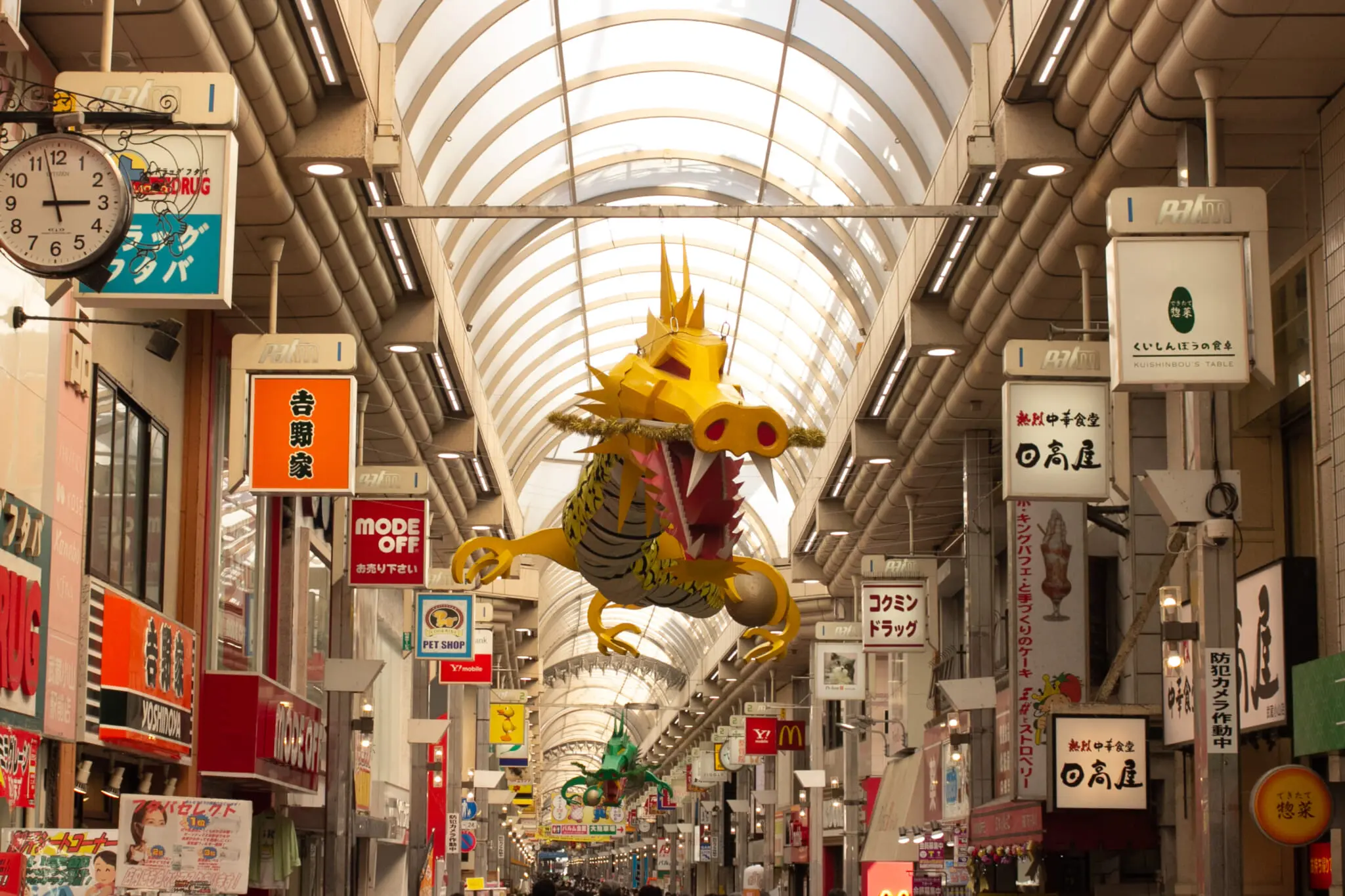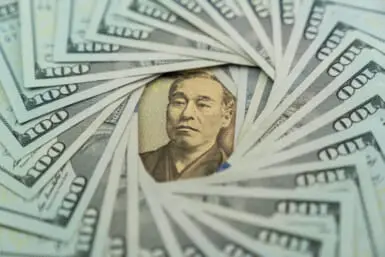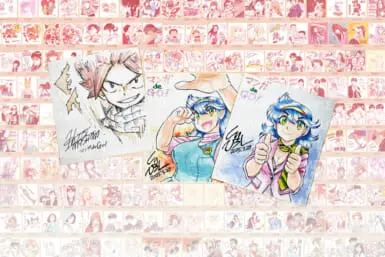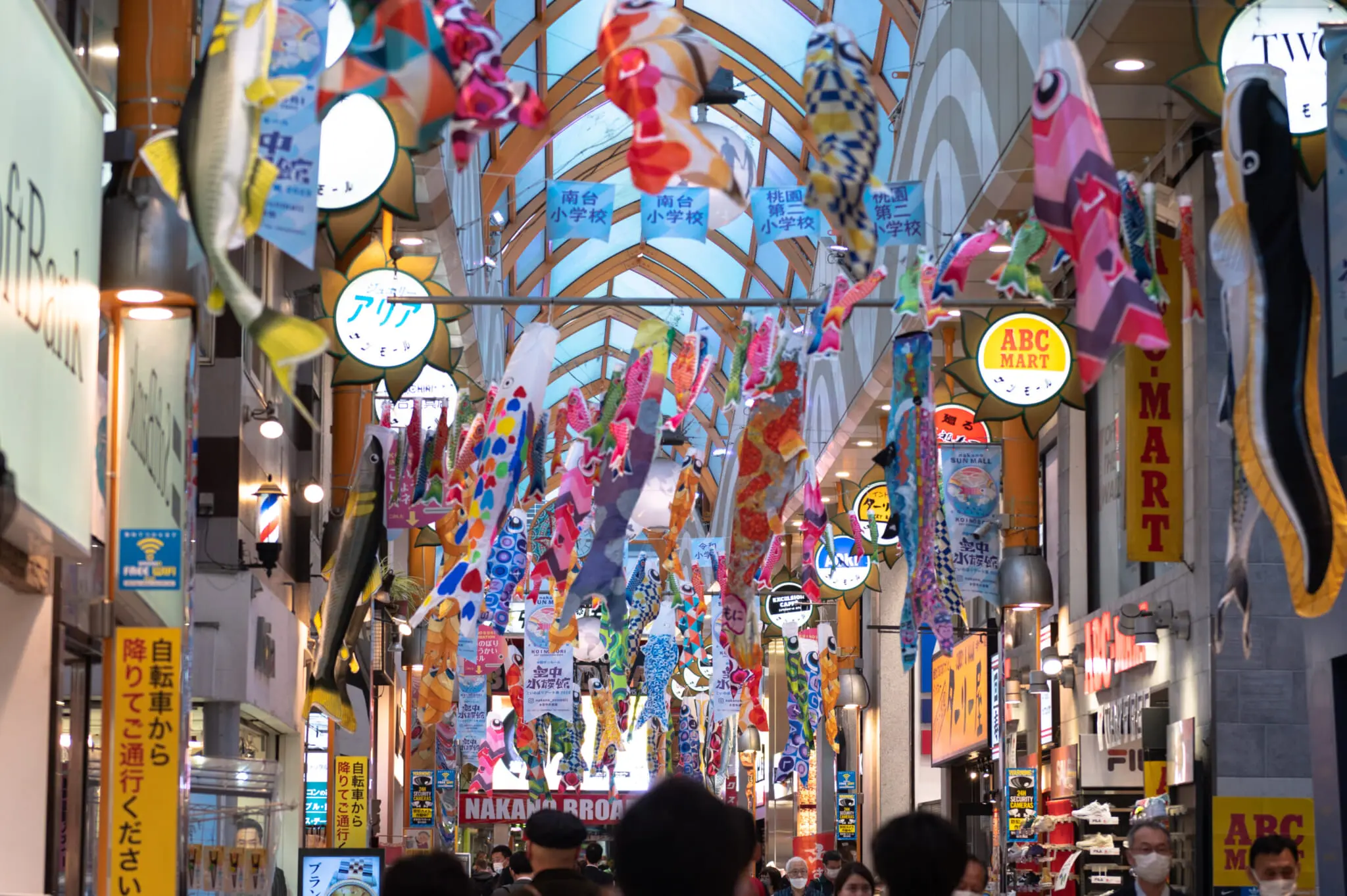
Nakano Sun Mall | Photo by Lisa Knight
Nakano Sun Mall: A Subculture Haven
The town of Nakano is a lively spot close to Shinjuku, thronging with people both during the day and at night. Known as a champion of subculture, Nakano is a neighborhood with a heartbeat. While nearby areas were redeveloped, Nakano has stayed strong, thanks in part to Sun Mall, which is connected to the station itself. Alighting at Nakano Station and heading to the North Exit, visitors are greeted with the recognizable orange Sun Mall facade.
At 224 meters, Sun Mall is the shortest on our list. Or so it may seem. Head to the end of Sun Mall and you’ll see “Nakano Broadway” emblazoned across the doorway of the building in front. Arguably, it is not Sun Mall itself, but all the side streets and offshoots that make it what it is. A trip to Sun Mall means not just the ample, covered street but also the small alleyways and the building directly off it, too.
Nakano Broadway is essentially a five-storey arcade tacked onto the end of Sun Mall, originally built as luxury apartments boasting access to the mall itself. The 10-story building gradually became infiltrated with five floors of stores specializing in subcultures from manga to crystals, squeezed into former apartments. Back outside, the small alleyways are packed with tiny bars, food stands and eateries. It’s a remarkably satisfying shoutengai to explore.
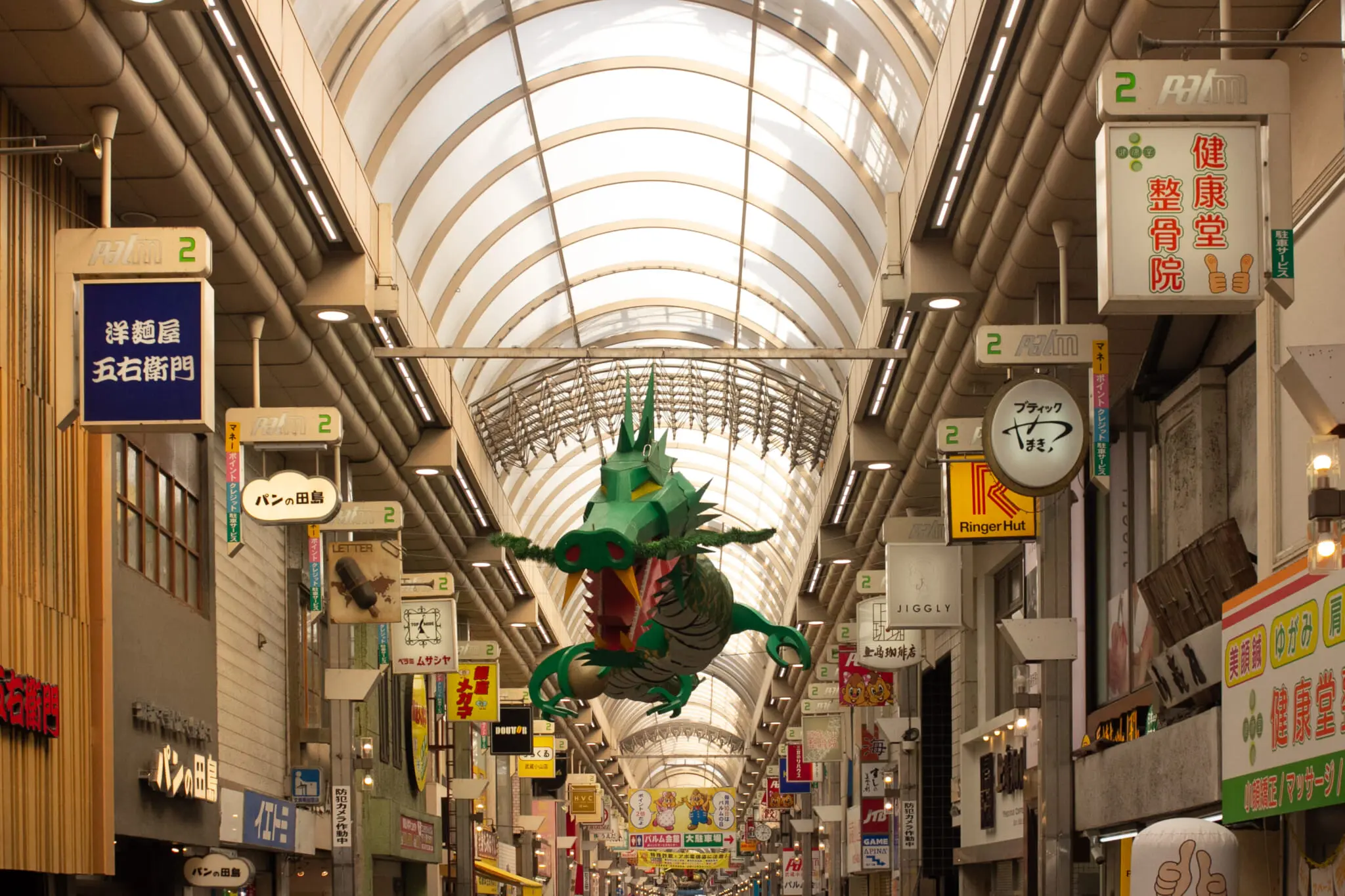
Photo by Kim Kahan
Musashi Koyama Shopping Street Palm: Greenhouse Desires
The jewel in the crown of Musashi Koyama, Palm Shoutengai, at 800 meters, is the longest covered shopping street in the whole of Tokyo. Established in 1956, its interesting name does not refer to an abundance of ferns but was actually the result of a competition among locals to name the street.
The Palm has been infiltrated over the years by chain stores, but don’t let that stop you visiting as there are plenty of independent shops and eateries to be found. Cute little parfait stores with handwritten signs, shops for older people stocking only big, comfortable underwear, old-style bakeries and mochi sellers; there really is something for everyone.
Then there’s the covered roof. There’s something about shopping undercover that has that extra feeling of excitement. Not to mention practicality during the rainy season and when the humidity hits. Come holiday time, the shopping street is thronging with both locals and tourists. The mix of shops includes cheap yaoya (fruit and vegetable stores) with shopkeepers shouting their wares at full volume.
The street is set up with a couple of avenues, so heading in a circle is possible.
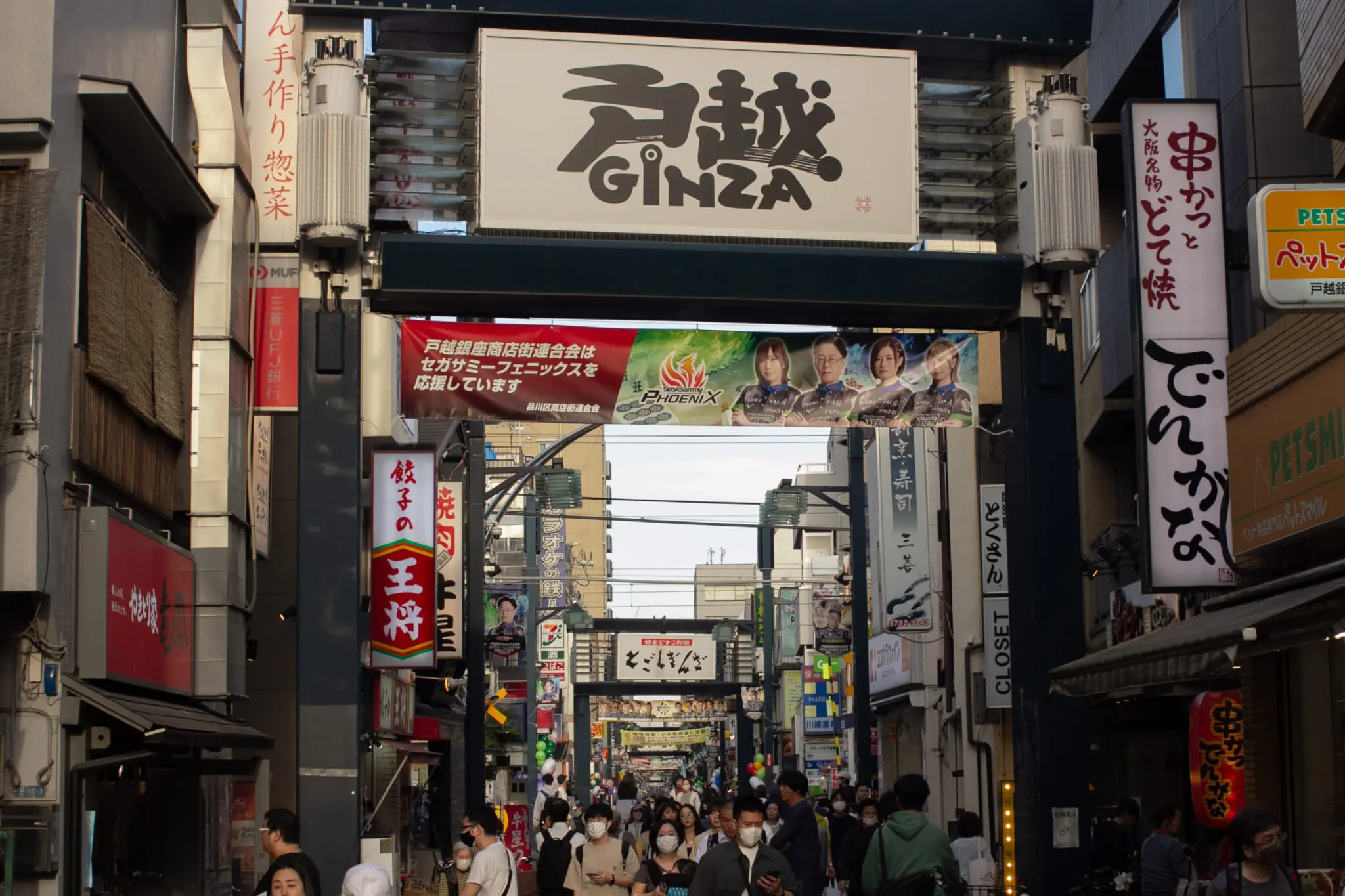
Togoshi Ginza | Photo by Kim Kahan
Togoshi Ginza: A Sensory Overload
A marathon of a street, Togoshi Ginza is known locally for its abundance of food stalls and vendors. The longest in Tokyo, it boasts over 400 businesses crammed into a street that is 1.2 kilometers long. It is crossed in the middle by a local railroad, which makes for great photos, as well as access.
Whatever the weather, the bustling shopping street is a hive of activity, with stallholders shouting for attention and old women on bicycles pedaling along at an alarming pace. All generations enjoy the attractions of Togoshi Ginza, with ice-cream shops, tachi-nomiya (small stalls at which to stand and drink) and even artisan ramen.
It has a vibrant, retro feel with smells from local rice-cake makers jostling for top place with smoky skewer stalls and people selling vegetables attempting to shout louder than those serving sushi.
If you’re susceptible to sensory overload, head to our favorite underrated shoutengai in Ota District: Zoushiki. Otherwise, visit Togoshi Ginza and make sure your stomach is empty.
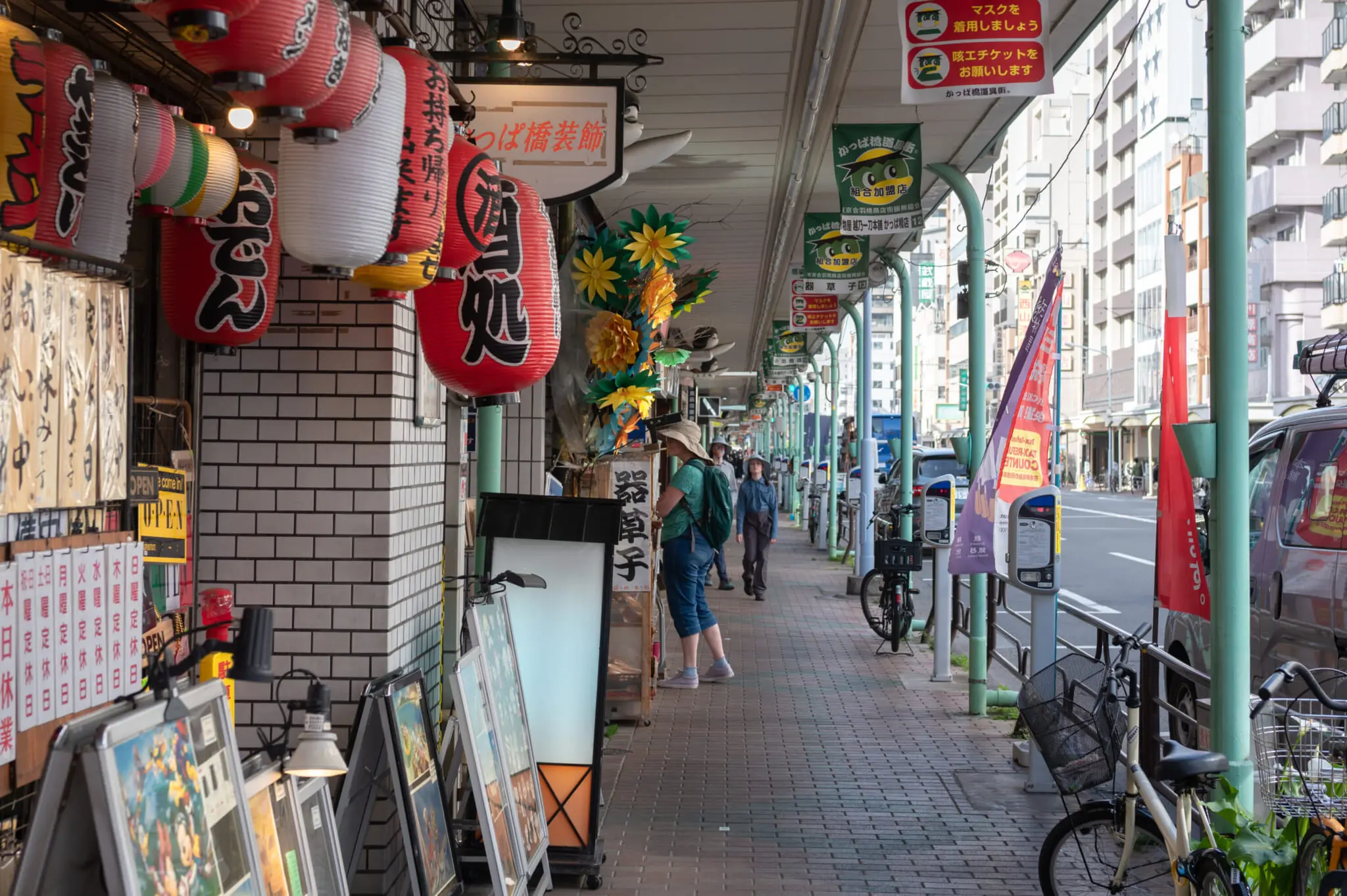
Kappabashi | Photo by Lisa Knight
Kappabashi Dougu Street: A Kitchen Paradise
During my time working at a 40-year-old soba noodle restaurant, the chef often visited Kappabashi to shop for kitchenware. Even a soba shop needed decent knives. Asking him where to get a present would result in a comment about Japanese knives from Kappabashi. It’s an area known for its abundance of culinary shops, selling everything a chef or restaurateur could desire. From the typical cups, plates and crockery for diners to the Japanese-style fake food, Kappabashi has it all.
The street is unlike a typical Japanese shopping street in that it is wide with a road in the middle. Catering more to chefs and restaurant-owners, the community around Kappabashi is of the cooking kind, as chefs visit to get knives professionally sharpened and cooking implements serviced.
For those interested in shokuhin sampuru (food samples), there are many shops that offer workshops for those keen to make their own. Fake hash browns, anyone?
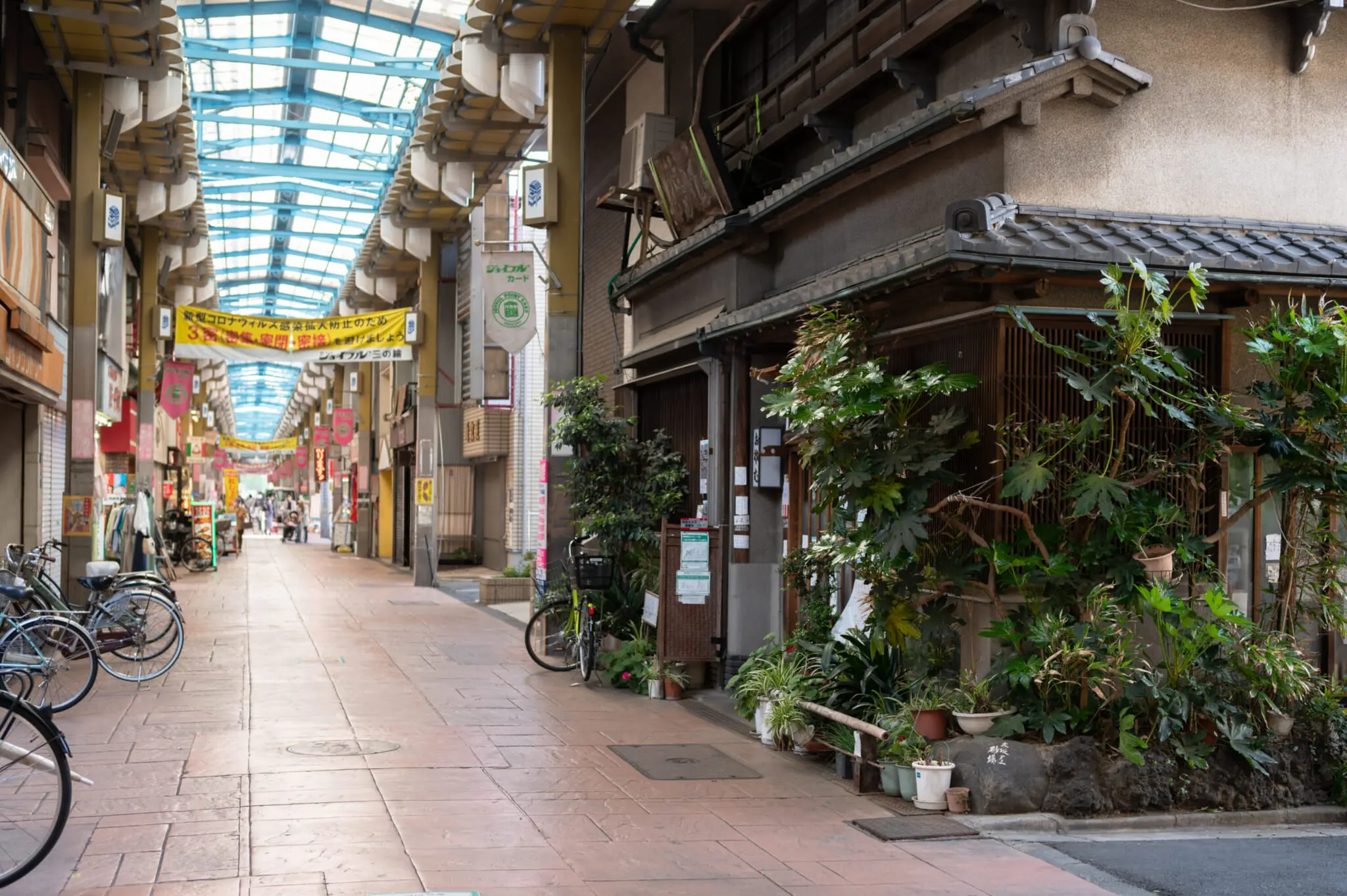
Joyful Minowa | Photo by Lisa Knight
Joyful Minowa Shopping Arcade: Downtown Vibes
Arakawa’s Joyful Minowa is perhaps one of the cheapest shopping streets in Tokyo. Take the Sakura Tram to its nearest station and get ready to find some bargains. A few years ago, the shopping street was in disrepair but with a bit of community spirit, the area is bouncing back. It recently hosted a new annual movie festival and is often featured in adverts because of its retro-Japanese atmosphere. Unlike many of the other places featured, Joyful Minowa has few chain stores.
From yakitori stands to kimono shops and ¥1,000 haircuts, Joyful Minowa is a shopping street of character. Find the locals nattering away outside shops, stop by at the flower store or grab some vegetables at the self-proclaimed “cheapest shop in Arakawa.” Joyful Minowa is there for when you want to take it easy and live life like a local in downtown Tokyo.
Related Posts
- Donato Kissaten: Jazz Records and Showa Era Furnishings
- Dining in Kamata: A Culinary World Tour in Tokyo’s Multi-Ethnic Shitamachi
- Tokyo Vinyl Culture and Where to Enjoy It

